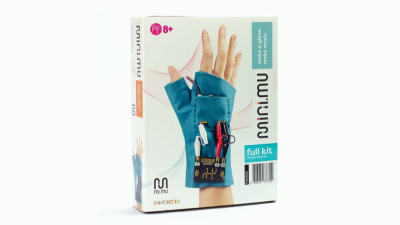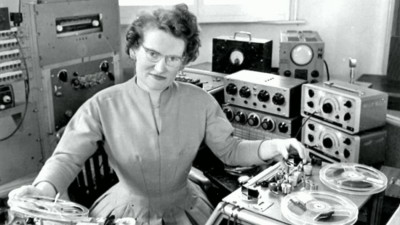Music throughout history has been inspired and changed by hackers and makers, and never moreso than in the 20th century. Helen Leigh is one such hacker, who brought a talk to Supercon to give us a crash course in the history of recording, electronics and music, and what the maker movement is doing in the music world today.
The tape recorder was an invention that kicked off a golden period of exploration in sound. Beginning in World War II, the Nazi propaganda machine cut and spliced recorded materials and disseminated them across broadcasting stations in Europe. To the astonishment of the Allies, certain German officials appeared to be making broadcasts from different studios at the same time, due to the high quality of the recording hardware. After the war, this technology was discovered by a group of Parisian recording artists who began to experiment with an art that became known as musique concrète, using tape hardware in weird and wonderful ways to create new sounds heretofore unheard in nature.
Helen’s talk explores this movement as an excellent example of the hacker ethos applied to musical creation. While much of the artistic output was amelodic and somewhat challenging to listen to, it nevertheless had a great impact on recording technology and techniques.
Helen recounts the work of Daphne Oram, who, inspired by musique concrète, went on to perform her own experiments, and eventually founded the BBC Radiophonic Workshop. This hallowed organisation became a hotbed of electronic and musical experimentation, developing innovative techniques in foley and laying the foundations for modern electronic music.
Particularly note worthy is the work done in the creation of the original Doctor Who theme song. Produced in the BBC Radiophonic Workshop by Delia Derbyshire, it was created entirely electronically from a score by Ron Grainer. In 1963, synthesizers weren’t readily available; instead, the whole composition was brought to life with signal generators, test equipment, tape loops, and recordings of white noise. Lengths of tape were cut and stuck back together with tape to produce the various parts of the track, with recordings sped up and slowed down to create the necessary pitch changes. Multitrack tape recording was not yet available, and thus the final mix was created by playing back several tapes all at the same time, with some necessary fussing required to get them all in sync. The cutting-edge production foreshadowed many innovations to come in recording technology.

With plenty of focus on the dawn of the art, Helen then moves on to discuss the current state of play. A hat tip is given to [LOOK MUM NO COMPUTER] and his famous Furby Organ; just one …read more
Source:: Hackaday

